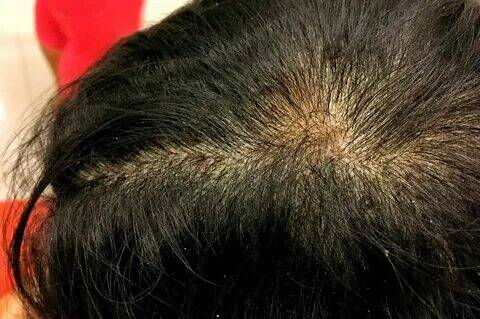Seborrheic Dermatitis Shampoo
Seborrheic Dermatitis Shampoo: Seborrheic dermatitis is a dermatological disorder affecting the scalp and trunk. You may also notice symptoms on your face or ears, such as redness and scales.
The source of this chronic inflammatory disorder is unclear, although genetics, hormones, and specific triggers, such as stress, may all be involved. While seborrheic dermatitis may affect anybody, it is more common in newborns under three months old and people between the ages of 30 and 60.
Scalp seborrheic dermatitis may result in dandruff and scaly spots. However, there are a number of Seborrheic dermatitis shampoos available for purchase — or those you may manufacture yourself — that may be beneficial.
The most effective over-the-counter shampoos
Dandruff is a frequent symptom of this illness. Doctors recommend medicated shampoos as a first-line therapy to assist relieve pain and reduce flaking. There are several over-the-counter (OTC) solutions available at your local pharmacy store or online.
Shampoos with selenium sulphide
Antifungal medicines, such as selenium sulphide, may be beneficial when administered as little as twice a week. This component: Pityrosporum ovale is the yeast targeted lowers the quantity of dandruff cells on the scalp, which relieves inflammation and itching Selsun Blue and Head & Shoulders Clinical are two shampoos that include this component.
Hyperpigmentation is an uncommon adverse effect that some people get with this substance. The most commonTrusted Source adverse effects include odour and a greasy feeling in the hair.
Shampoos with salicylic acid
Salicylic acid has not been examined as thoroughly as other substances for seborrheic dermatitis. It may be beneficial when combined with other therapies. Its major advantage is that it helps to minimise scalp scaling.
Salicylic acid is the active component in Neutrogena T/Sal Therapeutic, a shampoo designed primarily to reduce scalp buildup.
Ketoconazole-containing shampoos
The antifungal ketoconazole, on the other hand, has been extensively researched as a therapy for dandruff and related diseases. It prevents fungal development. Not only that, but azoles such as ketoconazole may have moderate anti-inflammatory benefits.
Seborrheic dermatitis shampoos Once the early symptoms have subsided, some individuals may control their seborrheic dermatitis by using ketoconazole shampoos once or twice a week. Ketoconazole is thought to be safe. It has not been demonstrated in studies to irritate the skin or create any negative effects.
Coal tar-containing shampoos
Coal tar inhibits fungi and reduces inflammation. This chemical has the potential to minimise sebum production. With its potential to suppress fungal development, coal tar has been shown in studies to be equally as effective as ketoconazole.
This chemical may be found in shampoos such as Neutrogena T/Gel Extra Strength, PsoriaTrax, and MG217.
Coal tar has a number of negative side effects. After application, some persons may get contact dermatitis on their fingers. Toxic symptoms include nausea, vomiting, and dark urine. Coal tar may raise the risk of getting some malignancies, such as squamous cell carcinoma.
Additional scalp seborrheic dermatitis advice
Aside from particular treatments or chemicals, various hygiene behaviours may aid with dandruff.
Use over-the-counter shampoos on a daily basis until symptoms subside. Following that, utilising them one to three times per week may be sufficient to treat symptoms.
If one kind of shampoo isn’t working, try alternating between two or more. For the greatest results, always follow the package directions.
Avoid using styling items such as hair sprays and gels. Avoid alcohol-containing personal care products as well. They may aggravate scaling and irritation.
Apply mineral oil or olive oil to your scalp to remove scales. Allow it to sit on your hair for approximately an hour before combing it through and rinsing it out.
Men: Regularly shampoo your facial hair. While the scalp receives the most attention, the skin behind beards and moustaches may react nicely to over-the-counter washes. Shaving may also help to relieve your problems.
For cradle caps in infants, use a nonmedicated shampoo once a day. Before washing, use a soft-bristled brush to gently remove scales. If not, use mineral oil for a few hours before gently combing out scales.
Conclusion
Seborrheic dermatitis is a common skin disorder that often affects the scalp. Minor hair loss can occur as a result of inflammation or aggressive scratching. However, once the disease is addressed with either OTC or prescription medication, hair begins to regrow.
Make an appointment with your doctor if you have seborrheic dermatitis and observe hair loss. They can assist you in developing a treatment strategy and ruling out other possible reasons for your hair loss.






